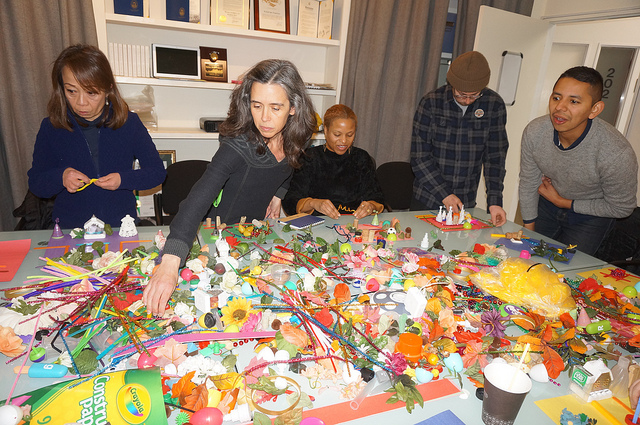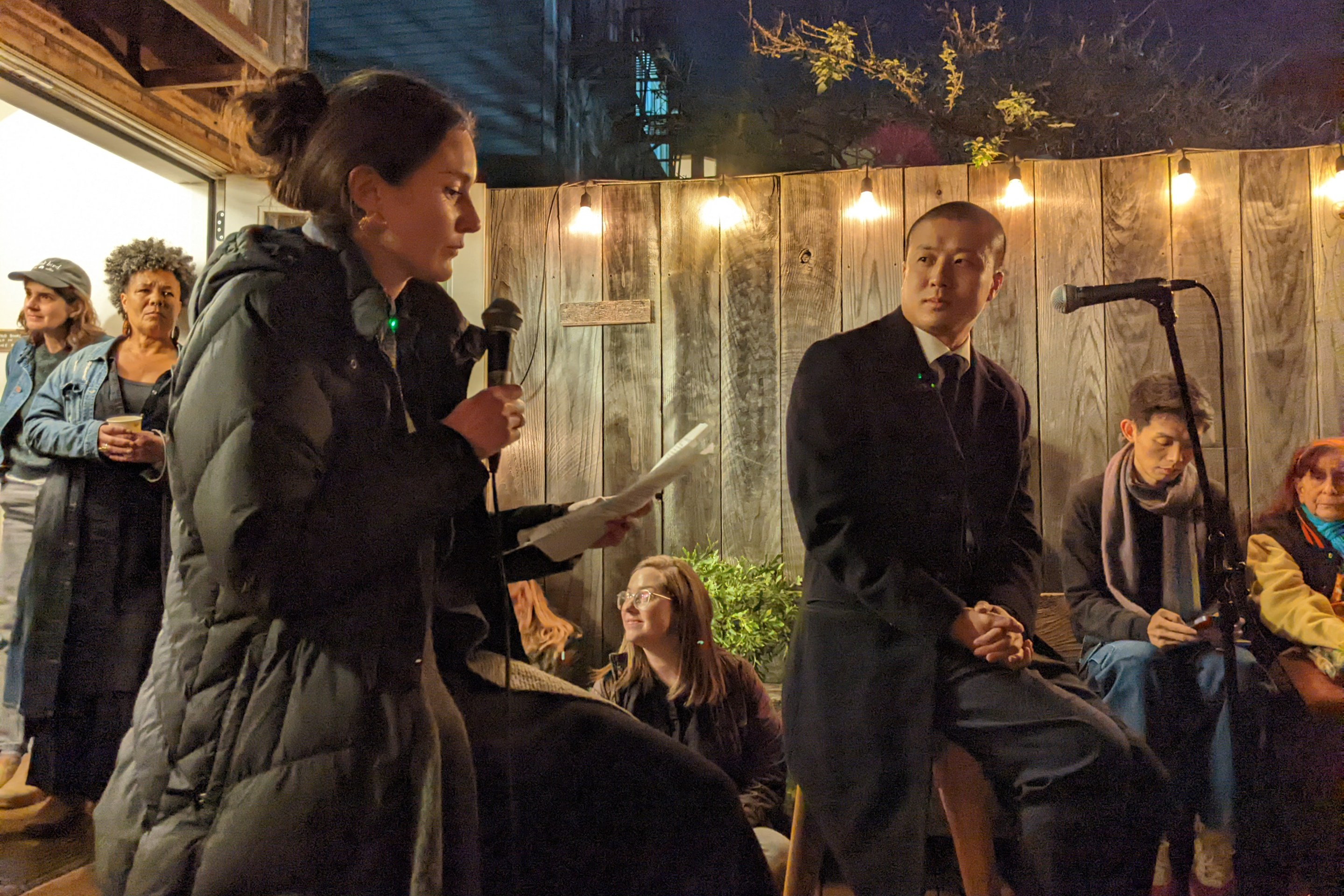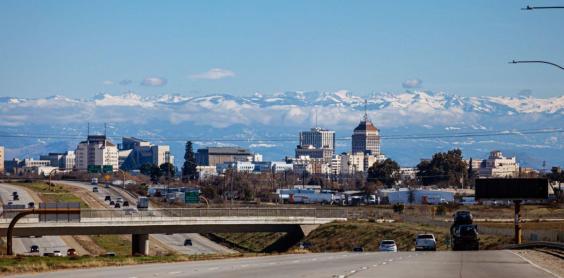Recently Place It, a design-and-participation-based urban planning group, held a training at Walk SF's offices on how to conduct more meaningful and interactive outreach for pedestrian and transportation projects in the Bay Area. Participants included staff from Walk SF, the San Francisco Municipal Transportation Agency community engagement team, SF Sunday Streets, and Safe Routes to School.
The outcomes of the workshop revealed that it is time we rethought how we conduct transportation and planning outreach.
Conventional transportation and urban planning outreach follow one of two paths: 1) A project--with rough parameters already decided--is presented to the public; or, less common but not unheard of, 2) The public is simply asked what pedestrian and transportation improvements they want, and/or what gripes they have about a street. In the first case, the rules of the game have already been written, thereby leading to public resentment; in the second, the format invites the typical requests for more parking, more lanes, and, in the case of transit, faster service.
Given that these outcomes are limited, Place It seeks to completely rethink the engagement process, starting with not simply what questions to ask but also what media to use. In the training and workshop at Walk SF, participants explored mobility, transportation, and walkability through their core memories, values, and aspirations.
To do this, we used the medium of model-building with found objects. And rather than start with a specific transportation or pedestrian-improvement project in mind, we began by exploring people’s memories of movement and mobility.
For participants Cathy and Jean-Paul, mobility was about the journey and destination. Cathy’s memory was of riding the train from suburban Delaware to Wanamaker’s Department Store in Philadelphia to see a Christmas tree. Jean-Paul’s memory was of taking the bus to BART from San Bruno with his mother to get to the Goodwill on Van Ness and Mission.
For Lulu and Adrienne, their memories of mobility were about decision-making. Lulu’s memory was of walking to school by herself in the Philippines, where she had to decide whether to walk a route that took her past a scary dog and an ice cream stand--or she could walk a safer way but with no ice cream. Adrienne’s memory was of deciding whether to walk to downtown San Rafael on a long route with greenery or a quicker but less scenic route. Other participants built memories of walking around the block on their own, pulling siblings along in a Radio Flyer wagon and learning to ride a bike.
At no point did participants reflect on freeways, parking lots, or car rides--what we think of as central to everyday American mobility experiences.
It could be argued that, well, that’s just kids’ stuff, and when we grow up we no longer value the kinds of things that once allowed for discovery, camaraderie, and comfort. Instead, we gravitate toward the infrastructure we have and supposedly need, such as parking lots. Yet in our outreach work, we always bring participants to the present and have them build what they want to see in their surroundings today; not once has a participant built a parking lot, a long commute, a freeway, a shopping mall, or an autonomous vehicle.
Instead, people build spaces and places and modes of transportation that allow them to feel a sense of belonging and safety, wonder and discovery, and that allow for maximum time spent with family and friends. What they build bears little resemblance to the transportation infrastructure we have been given in this country.
When they moved on to what they'd like to do with today's streets, Lulu, Cathy and Natasha chose to redesign the intersection of Van Ness and Market so that it was not simply safer for pedestrians but also included nature, public spaces, restrooms, outside meeting spaces, and, yes, windmills. Given the wind-tunnel-like nature of that part of San Francisco, they thought, why not add windmills to the tops of the new buildings slated for the intersection? This multi-pronged-solution stands in stark contrast to so many of our American streets and transportation systems in which engineers have chosen to solve only one problem: how to move more cars.
Through our work we have seen first hand that fundamentally people value belonging to a place and connecting with the world and people around them. We need to adjust how we do community engagement so that these values are reflected in our infrastructure.
***
James Rojas is an urban planner, community outreach specialist, and artist with Place It
John Kamp is a landscape and urban designer and facilitator with Place It and his own design practice, Prairieform.






